This site uses affiliate links, meaning that if you make a purchase through our links, we may earn an affiliate commission.
Embark on a captivating journey from the historic city of Cusco to Maras Salt Mines, nestled in the heart of the Sacred Valley. This remarkable expedition unveils 6 extraordinary discoveries awaiting you at the Maras Salt Mines.
From ancient traditions to stunning landscapes, immerse yourself in the wonders that make Maras a must-visit destination. Join us as we delve into the enchantment of Maras, where nature’s beauty and human ingenuity intertwine.
GOOD TO KNOW: If you are starting your Peru adventure in Lima, then make sure to read 22 Expert Lima Tips for First-Time Visitors (Unlock Lima’s Treasures)
- 1. Cusco to Maras Salt Mines: Exploring Transportation Options
- 2. 6 Things to Discover at Maras Salt Mines
-
- 2.1. Marvel at the Delicate Artistry of the Terraced Salt Pools
- 2.2. Discover the Timeless Ancient Salt-Harvesting Techniques
- 2.3. Cultural Significance: Salt as a Symbol of Life
- 2.4. Spectacular Panoramic Views: Nature's Splendor
- 2.5. Interact with Local Communities
- 2.6. Discover the Benefits of Pink Salt from Maras
- 3. Intrepid Scout's Tips for Visiting Maras Salt Mines
Cusco to Maras Salt Mines: Exploring Transportation Options
Embarking on a journey from Cusco to the enchanting Maras Salt Mines is an adventure in itself!
GOOD TO KNOW: Maras is a town at 11,090 feet (3,380 meters) above sea level in the Sacred Valley of the Cusco region, roughly 40 km northwest of Cusco. Maras Salt Mines are situated about 4 km north of the town of Maras. Specifically, they are situated along the slopes of the Qaqawinay Mountain
Here is how to navigate the routes and make your journey from Cusco to the Maras Salt Mines a seamless and memorable experience:
- Private Car or Taxi
From personal experience getting a private driver or hiring a taxi is the most convenient option that provides total flexibility allowing you to customize your itinerary and explore the region at your own pace.
If you are staying in one of the hotels in Cusco, I am sure that your hotel will be more than happy to arrange for you a driver and even a guide. Needless to say, this is an expensive option, but it is all worth it.
- Guided Tour
Joining a guided tour not only simplifies the logistics but also provides valuable insights and expertise.
- By Colectivo
There is a colectivo station on Avenida Grau in Cusco. First of all, find the colectivo that goes to Urubamba. Second, let the driver know that you will want to get off at the town of Maras. It will take you about 45 minutes to reach Maras. Now, something to keep in mind is that colectivo do not leave until they are full, but usually, they fill up very fast so it should not take long at all for you to be on your way to Maras.
Get off at Maras stop. Finally, hire a taxi to take you to the mines. It will be about a 15-minute drive to get to the salt mines from the town of Maras.
6 Things to Discover at Maras Salt Mines
Marvel at the Delicate Artistry of the Terraced Salt Pools
The sight of 4,500 glittering pools is absolutely jaw-dropping! You will be absolutely mesmerized by the intricate network of terraced salt pools that grace the mountainside.
Take a moment and marvel at the patterns created by the interplay of sunlight and evaporating saltwater, a testament to human and nature’s delicate artistry.
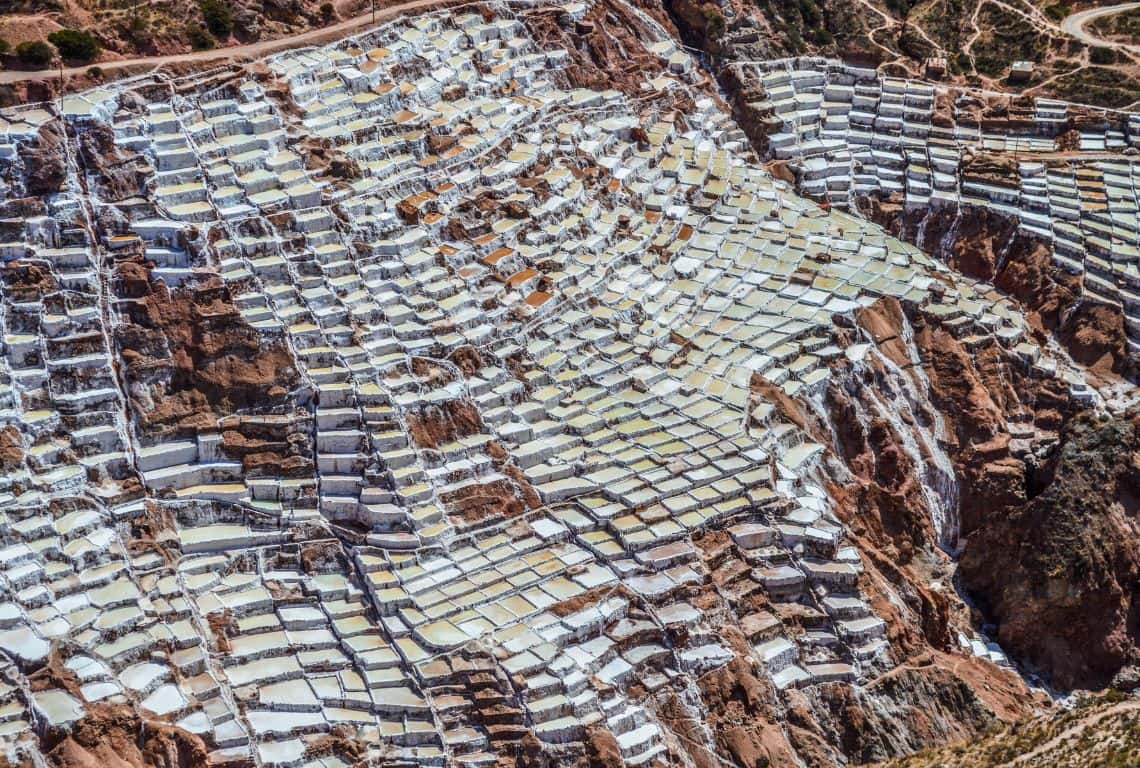
Notice the coarse frosty white boundaries of the salt evaporation pools. Let your eyes will follow them as they stretch down the steep slopes of the canyon that descends to the Rio Vilcanota and the Sacred Valley of the Incas.
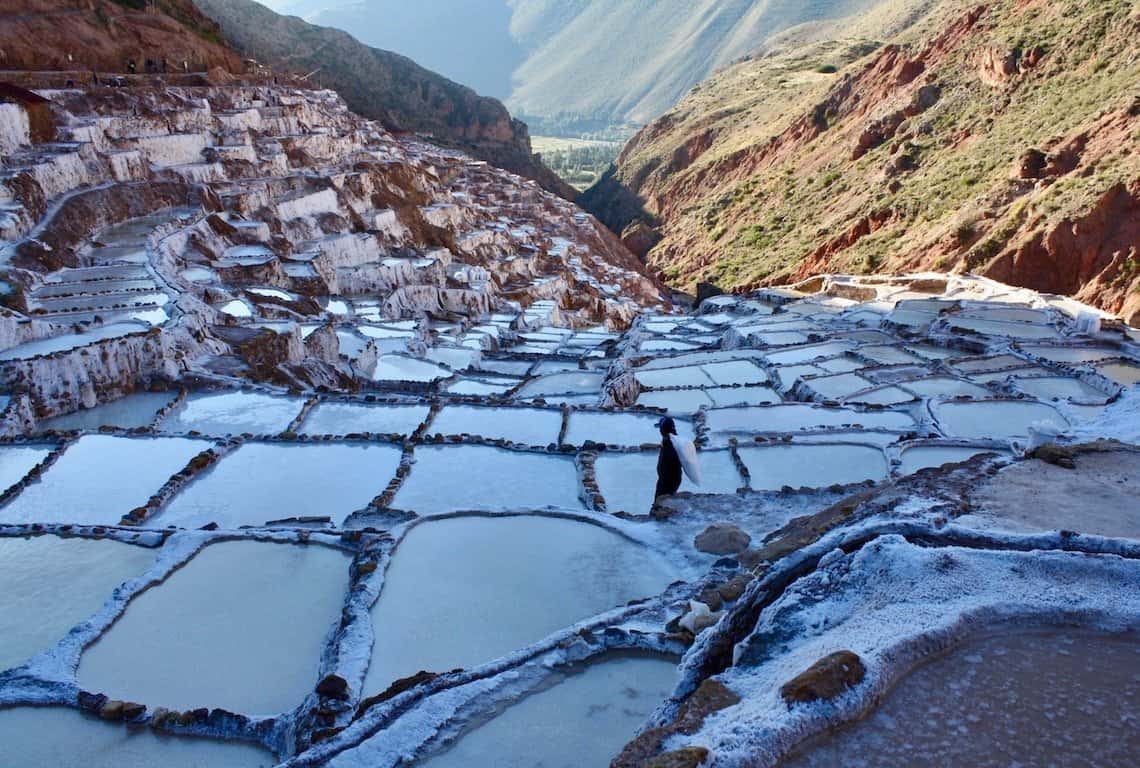
GOOD TO KNOW: The salt pools were built around 200 AD-900 AD by the Chanapata culture, pre-dating the Incas, and are known in Quechua as Kachi Raqay. To this day, they are mined by local families for their special Peruvian pink salt.
Here are some details about these pools:
- The terraced salt pools form an intricate network that cascades down the mountainside. Each pool is meticulously constructed to capture and channel the natural saltwater springs.
- Over time, the saltwater gradually evaporates, leaving behind a crystallized layer of salt on the surface of the pools. This process creates mesmerizing patterns and formations that vary in texture and color, making each pool a unique work of art.
- The interplay of sunlight with the salt water and the salt crystals creates a stunning visual spectacle. The sunlight reflects off the salt, casting shimmering hues of white and shades of pink on the pools, evoking a dreamlike ambiance.
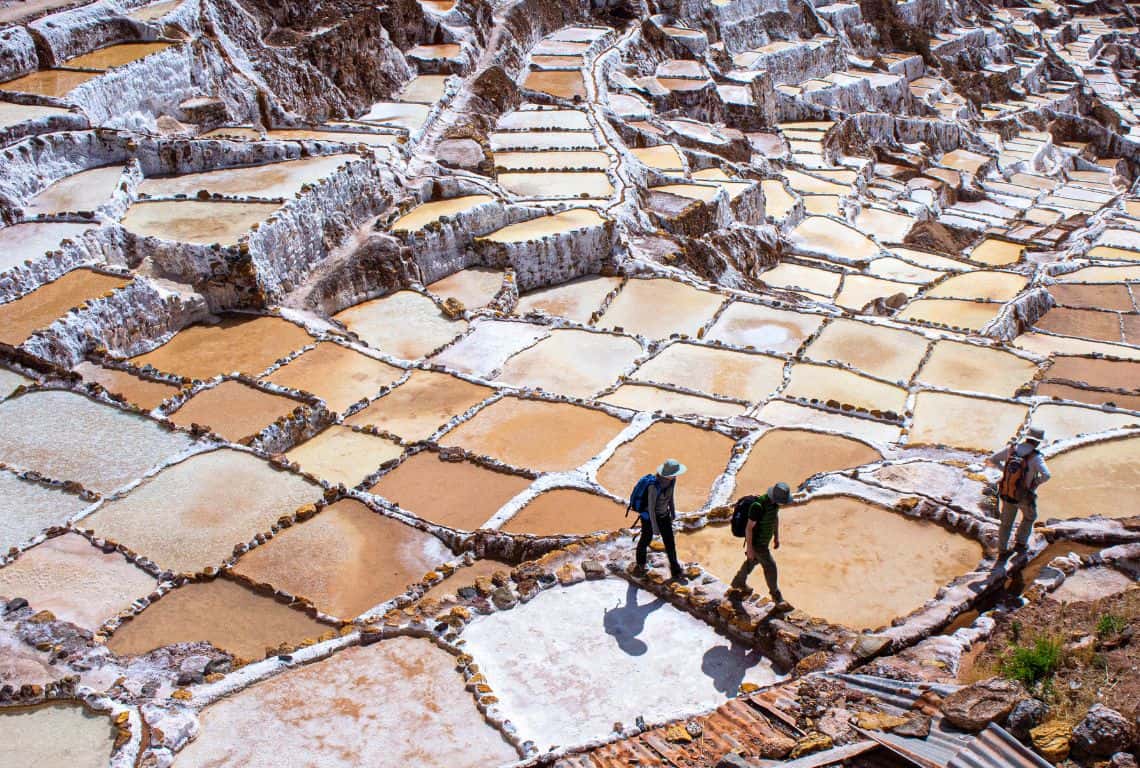
- The appearance of the terraced pools can change throughout the day, depending on the angle of the sunlight and the stage of evaporation. Witnessing the pools at different times offers a dynamic and ever-changing visual experience.
- Visiting the terraced salt pools at Maras is not just a visual treat but also a sensory delight. Feel the crunchy texture of the salt beneath your feet as you walk along the edges of the pools, and inhale the unique scent of the saline-rich air.
- The terraced salt pools provide an ideal backdrop for photography enthusiasts. Capture stunning reflections, patterns, and contrasting colors to create extraordinary images that showcase the intricate beauty of nature’s delicate artistry.
- The local community takes great pride in preserving and maintaining the terraced salt pools. The careful maintenance of the channels and walls ensures the efficient flow of salt water and the sustainability of the salt harvesting process.
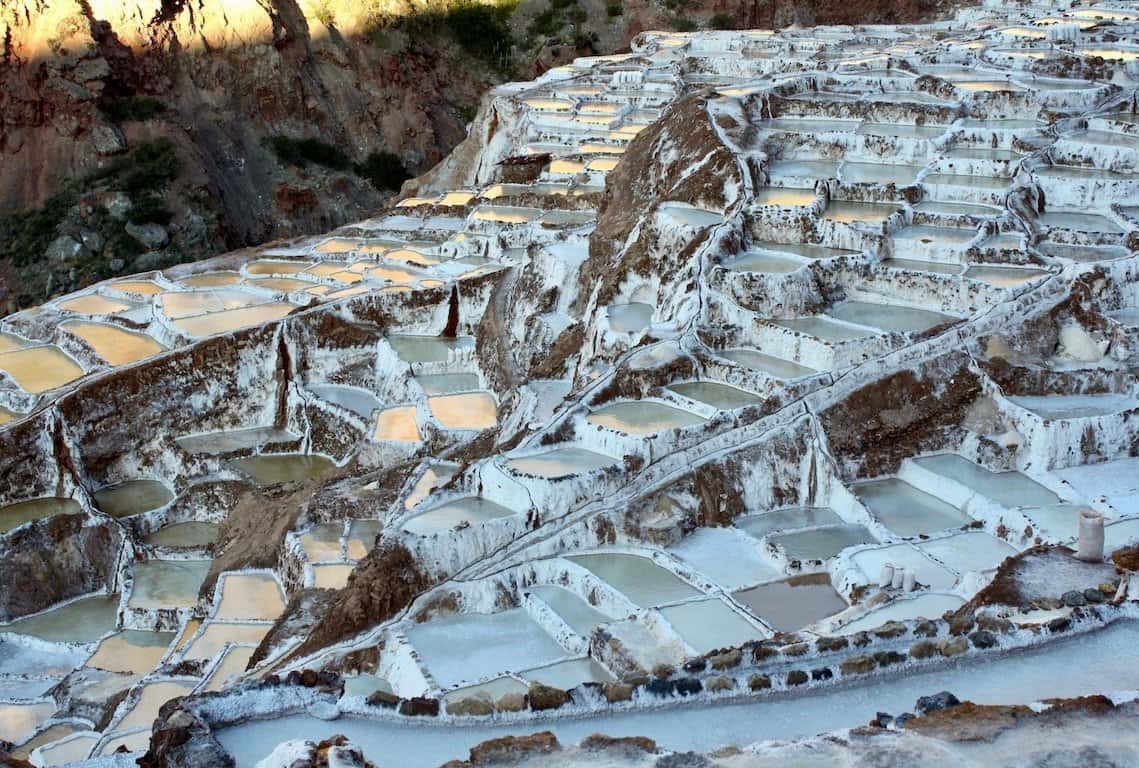
GOOD TO KNOW: Salt ponds are usually found on coastal plains. They are filled with seawater from the incoming tide. Consequently, the salt is collected by the evaporation process.
In contrast, the Salt Mines of Maras are a long way from the ocean, situated at an altitude of 3,380 meters.
Once, this area was a part of the sea floor. The movement of tectonic plates pushed the seabed up to form the Andes and the sea salt was locked into the rocks.
The highly salty Qoripujio subterranean stream emerges at the top of the canyon. The saline spring water is tepid with a temperature of approximately 25 C. Its flow is guided into an intricate system of a myriad of tiny channels. The channels run steadily down into the ancient terraced ponds.
- In the Salt Mines of Maras, the salt cultivation and collection process is deemed energy efficient – no pumping is required; gravity plays the major role here and moves the inlet water from the higher terrace to the lower terrace.
- The process is also environmentally friendly because the highly saline water if not harvested would contaminate the Urubamba River downstream. Due to this fact, and the use of a natural spring as a water source Maras salt is marketed as “ecological salt”.
- Incidentally, salt production at the Salt Mines of Maras stops during the rainy season from November to February. The rain dilutes the inlet water causing evaporation to take longer and is deemed inefficient.
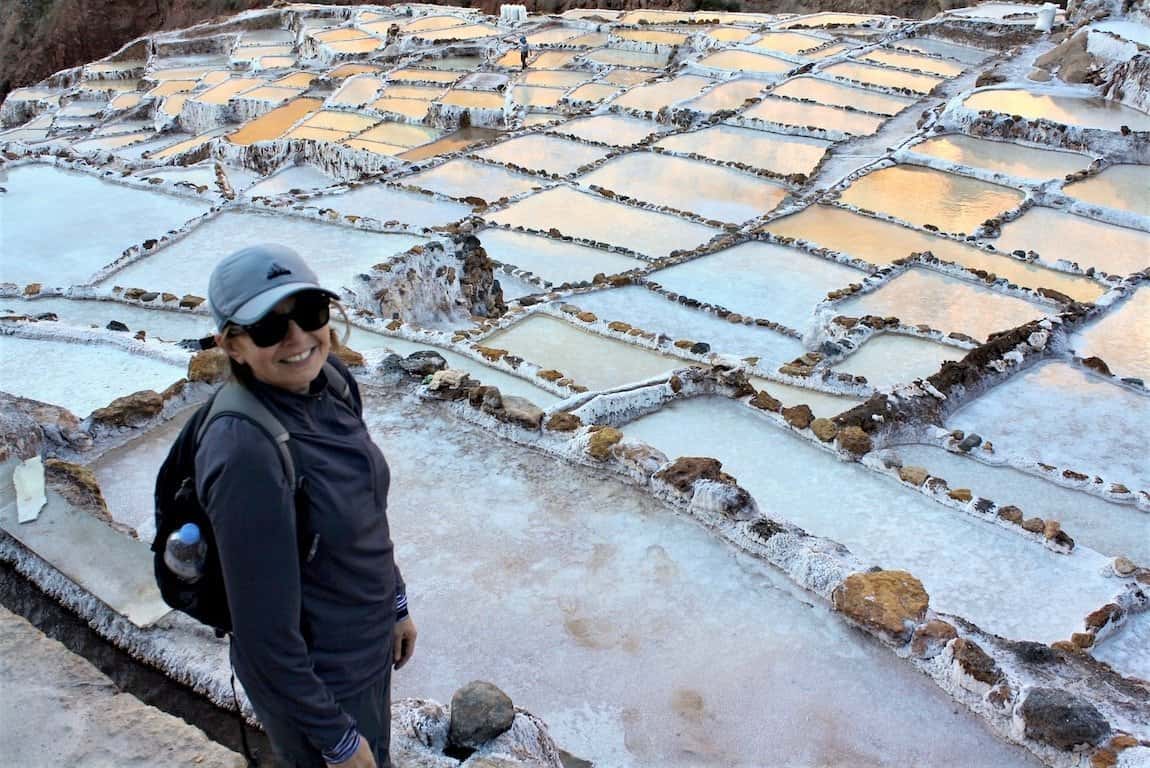
Discover the Timeless Ancient Salt-Harvesting Techniques
At the Maras Salt Mines, you have the opportunity to delve into the ancient salt-harvesting techniques that have been passed down through generations.
PRO TIP: Engage with local salt workers to witness and learn about these time-honored methods of extracting salt from the pools.
Here are some fascinating details about these traditional practices:
- Channel System
The salt-harvesting process begins with a sophisticated network of channels that divert the natural saltwater springs into the terraced pools. These channels, carefully constructed by the salt workers, control the flow of water and distribute it evenly throughout the pools.
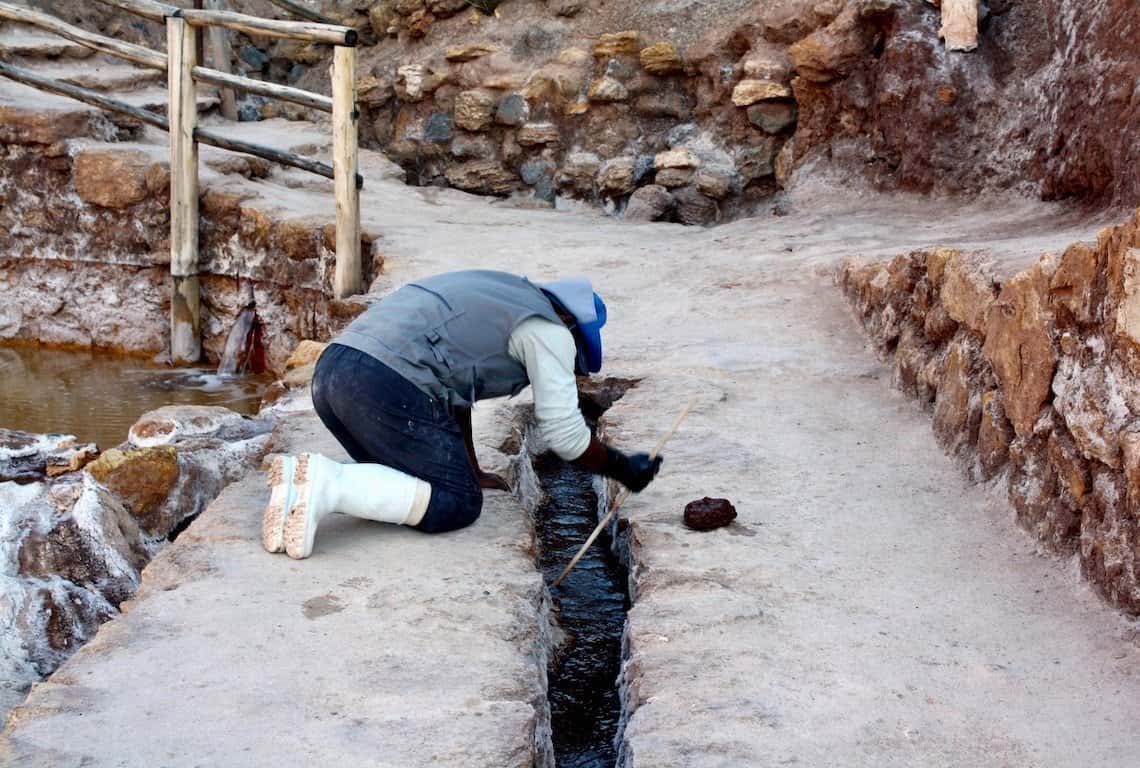
- Evaporation Process
Once the saltwater fills the terraced pools, the process of evaporation begins. As the sun’s rays heat the water, it gradually evaporates, leaving behind a concentrated solution of salt.
Each pan is filled up every three days during the dry season of May to October to a depth of approximately 3 cm each time. Once this water is evaporated, the pans are replenished with the same volume of inlet water.
This process is repeated until a precipitate of salt 5-10 cm thick forms on the floor of the pan.
At that point, the pond’s keeper closes the water-feeder notch and allows the pond to go dry.
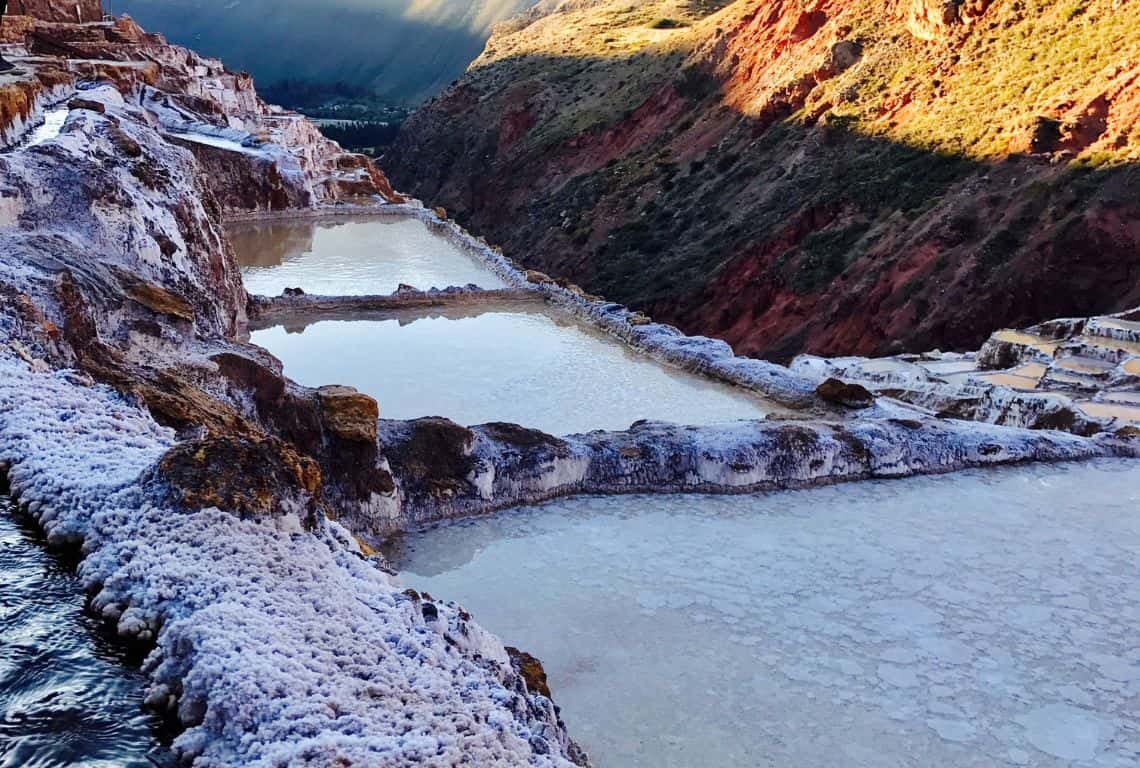
- Manual Labor
Harvesting the salt is a labor-intensive process that relies on manual techniques.
First of all, the salt collection process starts with flattening the ground of each pond with heavy wooden batons. The pressure of the beating creates a tight surface that will withstand the heavy soaking and create ideal conditions for the crystallization process.
Salt workers use long-handled tools, such as wooden rakes and shovels, to carefully scrape the salt crystals that form on the surface of the pools.
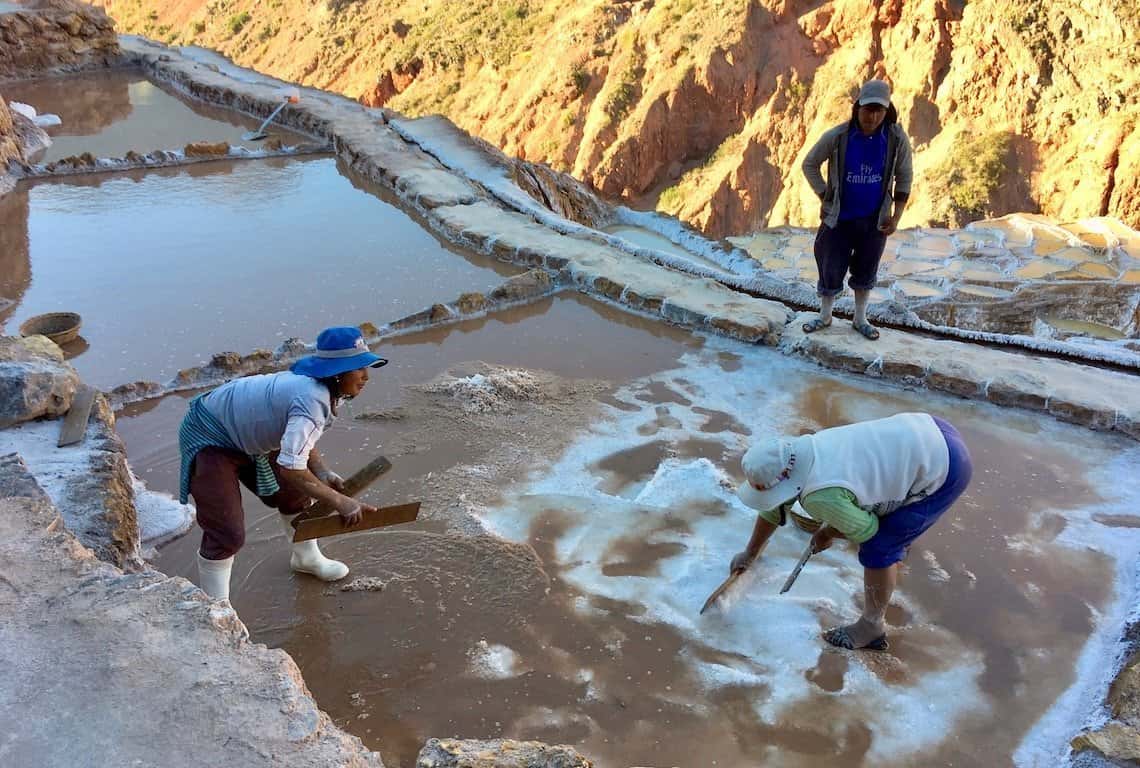
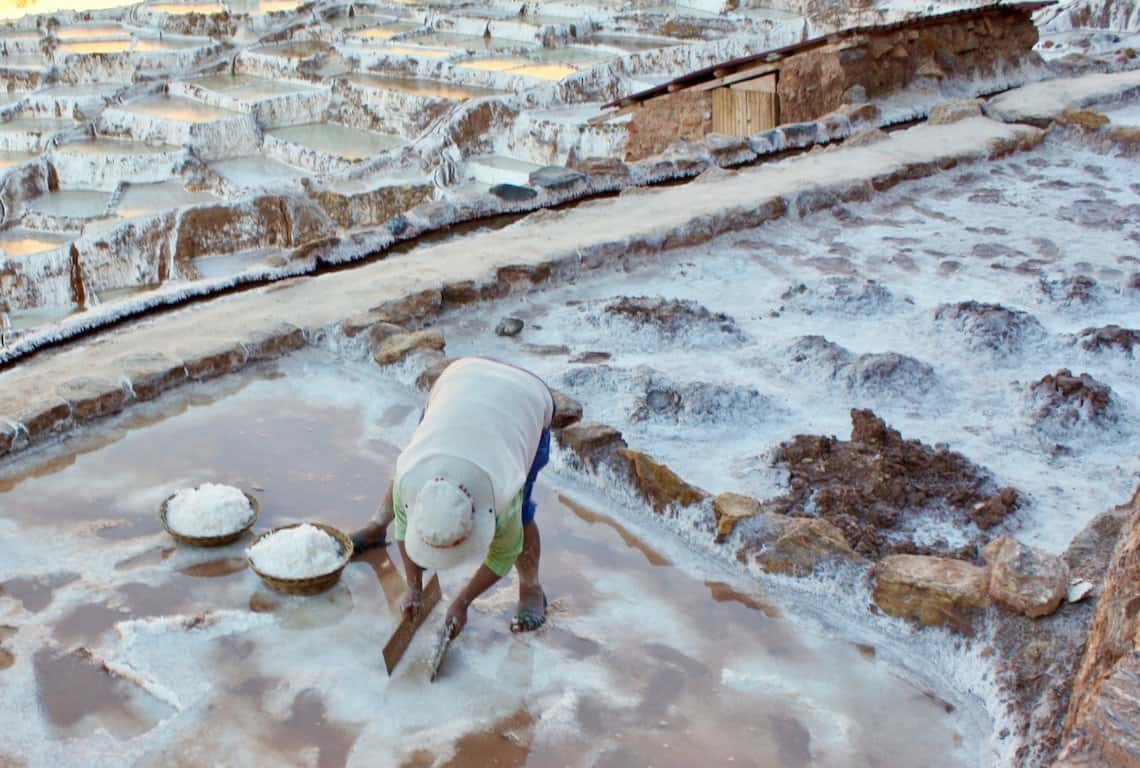
- Salt Collection
Each pan produces approximately 150 kg of salt at a time and the salt crystallization process is repeated several times during May to October period.
Almost all the ponds are less than four meters square in area, and none exceed thirty centimeters in depth. They are all shaped into polygons.
Eventually, the keepers start harvesting the crystallized salt by first breaking it with a piece of wood and then carefully scraping the dry salt from the sides and bottom.
The salt is stockpiled into little salt pyramids next to the pond to drain the entrained liquid. The drained salt is then further washed with the inlet water to remove impurities.
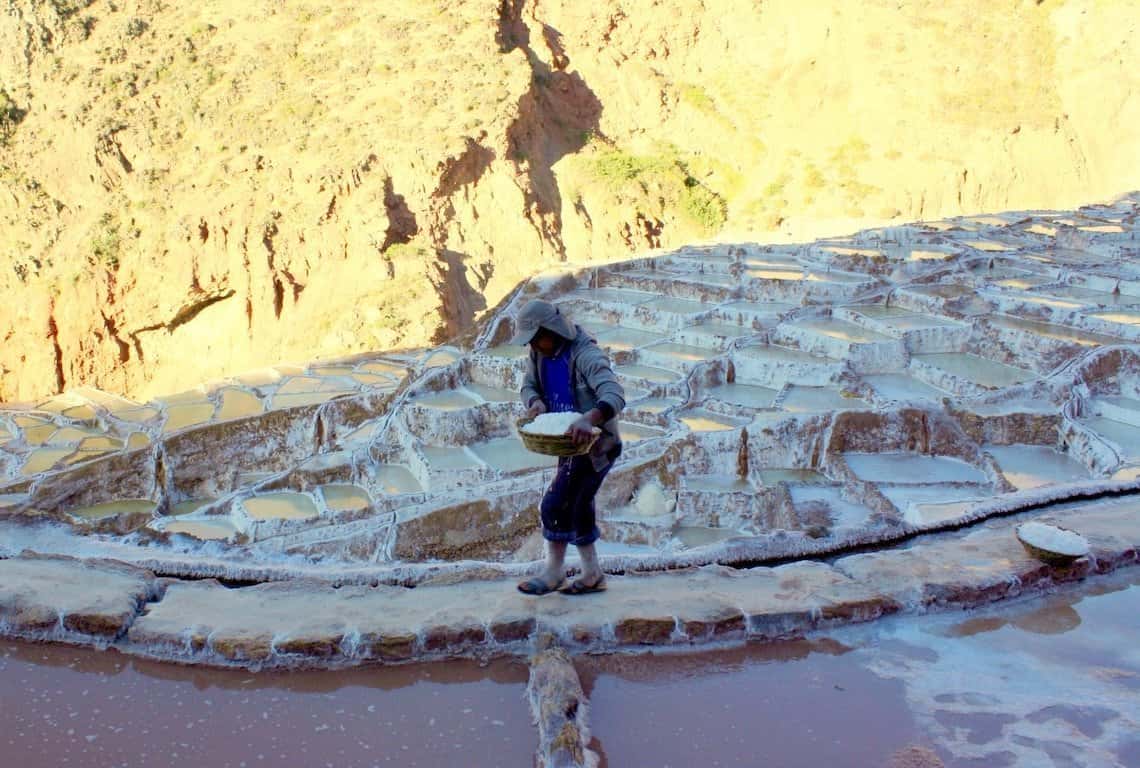
- Traditional Tools
Traditional tools, such as woven baskets and handwoven bags made from natural fibers, are used to transport the harvested salt from the pools to the storage areas. These tools reflect the ingenuity and resourcefulness of the local community in their salt-harvesting practices.
- Preservation of Techniques
The knowledge and techniques of salt harvesting have been carefully preserved and passed down from one generation to the next. Salt workers take great pride in maintaining these traditions and ensuring the continuity of this ancient craft.
- Cultural Significance
The salt-harvesting practices at Maras hold deep cultural significance for the local communities. Salt has long been considered a precious and essential resource, symbolizing purity, fertility, and prosperity. The traditions surrounding salt harvesting are intertwined with ancient beliefs and customs that continue to be cherished and celebrated.
Cultural Significance: Salt as a Symbol of Life
In the Andean region, salt holds immense cultural significance, serving as a symbol of life, prosperity, and community.
Here are key insights to gain a deeper understanding of this profound cultural connection:
- Economic Importance
Salt has long been a valuable commodity, and its production at Maras has played a crucial role in the region’s economy. The salt harvested from the terraced pools is not only used locally but also traded and sold in markets across the Andean region.
- Spiritual Beliefs
Salt is believed to possess purifying and cleansing properties in many indigenous cultures. It is often used in rituals and ceremonies to ward off negative energies, bless new beginnings, and promote spiritual well-being.
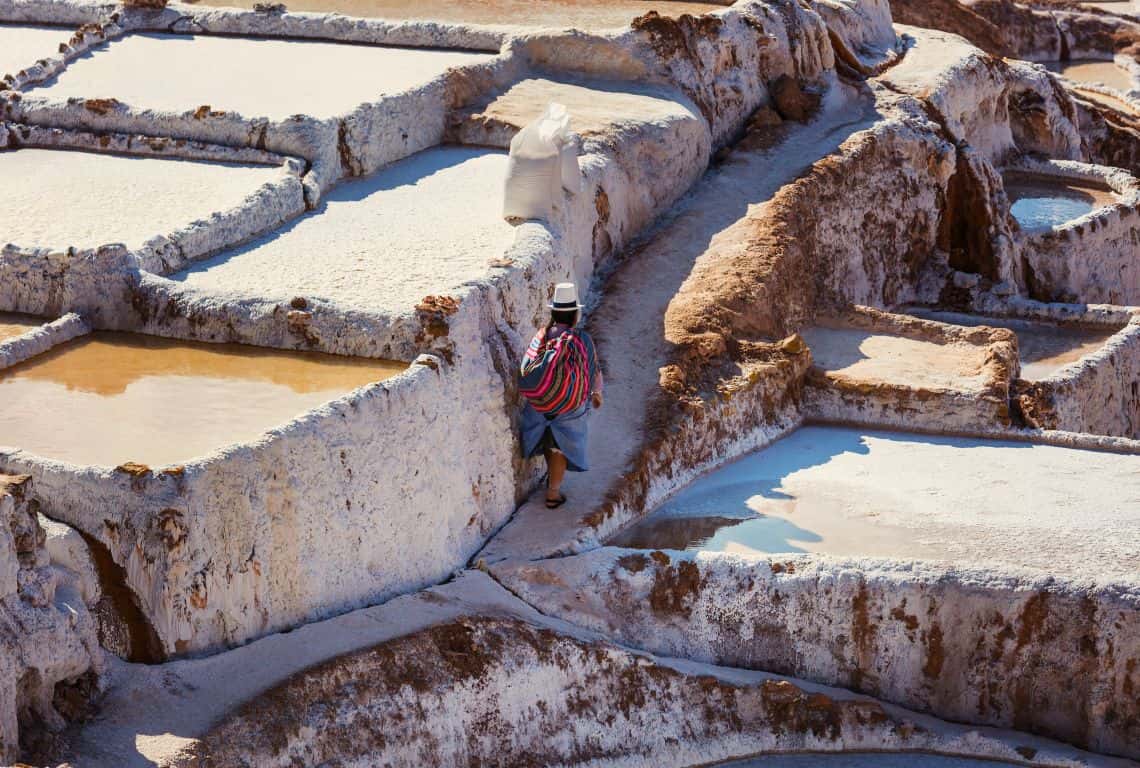
- Symbol of Abundance
Salt’s role as a symbol of abundance is deeply ingrained in Andean traditions. Its presence on the dining table signifies prosperity and the ability to provide for one’s family. Sharing salt with guests is seen as an act of hospitality and goodwill.
- Offering to Pachamama
Pachamama, the revered Andean Earth Mother, is often honored with offerings that include salt. This act is meant to express gratitude for the bounties of the land and to seek her blessings for a fruitful harvest and harmonious community life.
- Community Cooperation
The Salt Mines of Maras are owned and maintained by a community of local artisans belonging to a cooperative system established during the time of the Incas, if not earlier. The community in ancient times was called the “Kachi,” which translates to “salt” in the local language.
The entire community carefully controls and monitors the flow of water. In addition, the proper maintenance of the myriad of tiny channels, the side walls, and the water-entry notches take the close cooperation of all of its members.
Traditionally, salt pools have been available to any person wishing to harvest salt. The owners of the salt ponds must be members of the community and families that are new to the community wishing to propitiate a salt pond get the one farthest from the community.
In addition, the size of the salt pond assigned to a family depends on the family’s size. Usually, there are many unused salt pools available to be farmed. Any prospective salt farmer needs only to locate a currently unmaintained pond. Next, they need to consult with the local informal cooperative, learn how to maintain the pond, and start harvesting the salt.
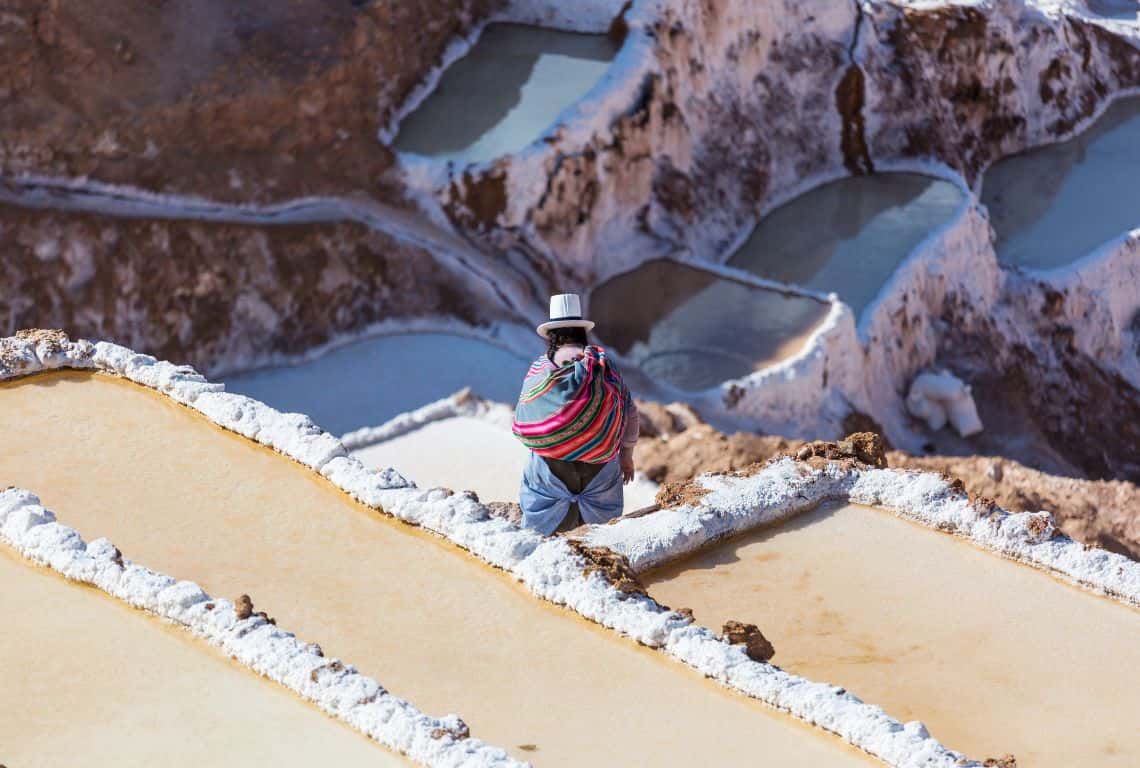
Cusco to Maras Salt Mines / 6 Things to Discover
- Traditional Medicine
Salt is also used in traditional Andean medicine for its perceived healing properties. It is believed to have cleansing and balancing effects on the body, promoting overall well-being and vitality.
- Cultural Heritage Preservation
The preservation of salt-harvesting traditions at Maras is not only about economic sustenance but also about safeguarding cultural heritage. The continuation of these practices ensures the transmission of knowledge, strengthens cultural identity and contributes to the resilience of the local communities.
Spectacular Panoramic Views: Nature's Splendor
As you venture through the Maras Salt Mines, prepare to be rewarded with breathtaking panoramic views that showcase the splendor of nature. The juxtaposition of the vibrant white salt pools against the backdrop of the surrounding mountains creates a visual spectacle that leaves a lasting impression.
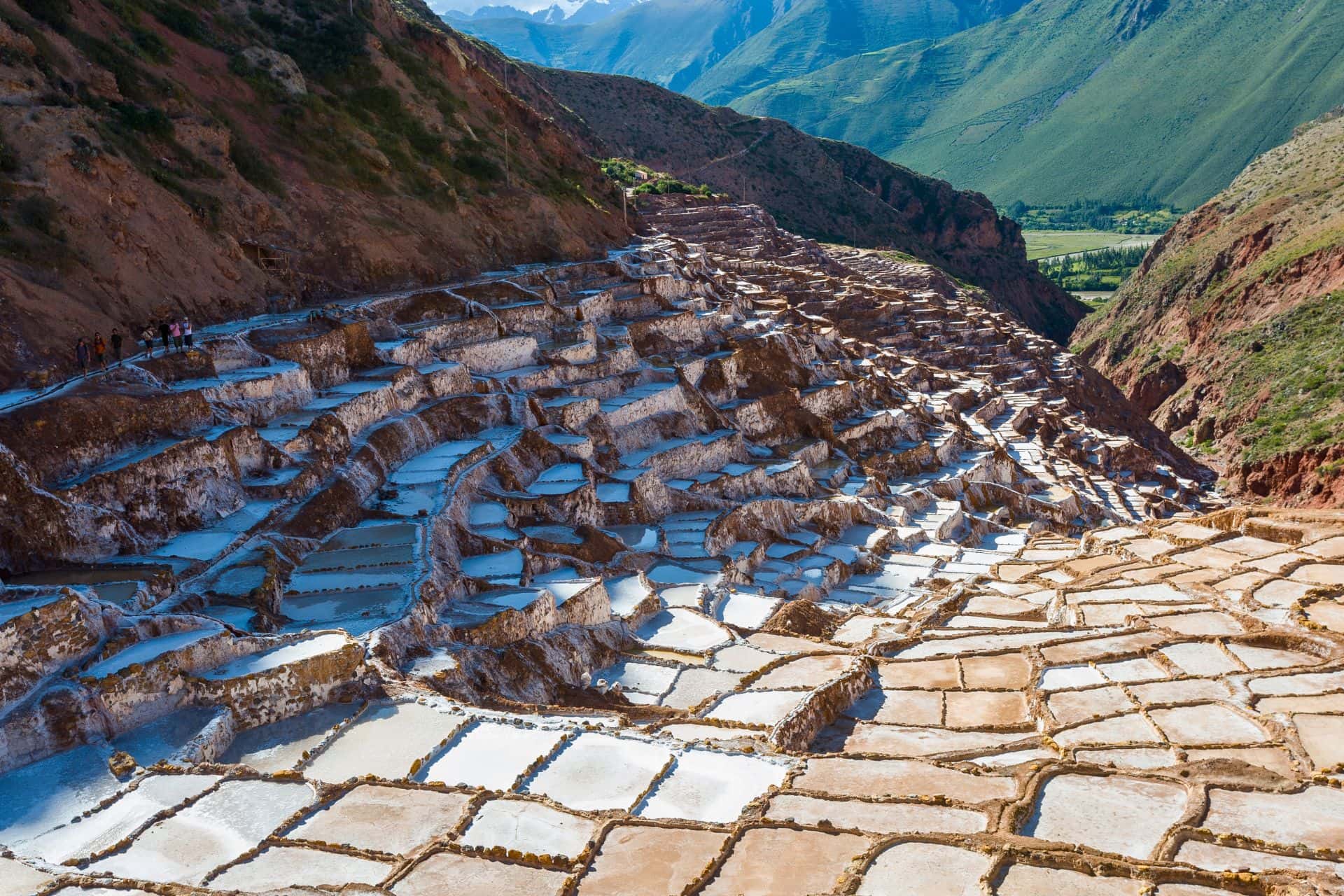
Here’s what you can expect to experience and appreciate:
- The contrast between the vivid white color of the salt pools and the earthy tones of the mountains is truly awe-inspiring. The brilliance of the salt against the rugged landscape creates a striking visual impact that highlights the beauty of nature’s contrasting elements.
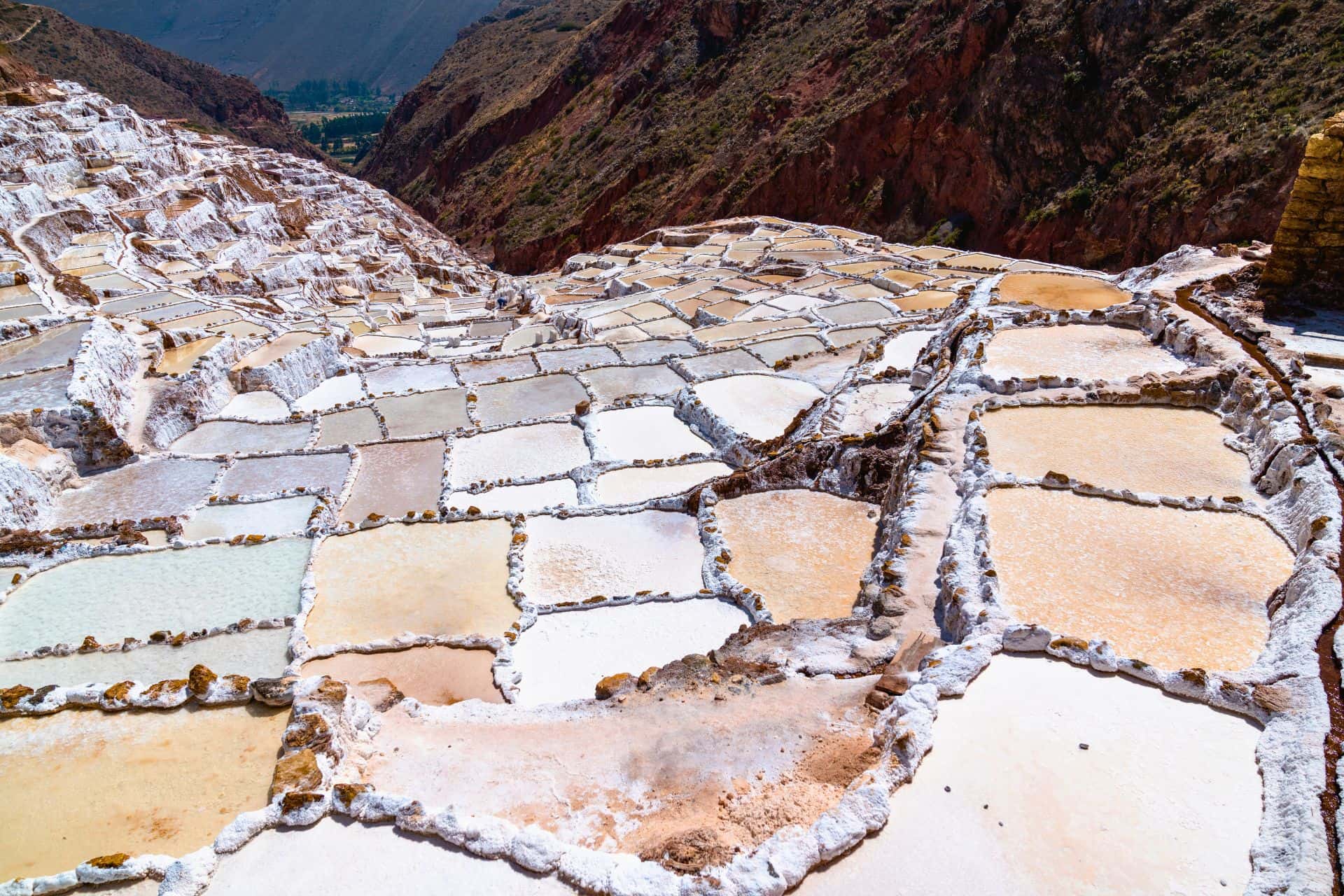
Cusco to Maras Salt Mines / 6 Things to Discover
- Depending on the time of day and the angle of the sunlight, the play of light on the salt pools and mountains creates a captivating dance of shadows and highlights. Watch as the sunlight dances on the water’s surface, illuminating the pools and adding a touch of ethereal beauty to the scene.
- The vast expanse of the salt mines is a sight to behold. As you stand amidst the terraced pools, you will be surrounded by an expansive landscape that stretches out before you.
Interact with Local Communities
The local communities near Maras are known for their warm and welcoming hospitality. As you step into their world, you will be greeted with open arms, and locals will be eager to share their cultural heritage and way of life.
PRO TIP: Engage in conversations with the salt workers and listen to their stories. They carry a wealth of knowledge about the salt mines, the traditions passed down through generations, and the challenges they face in preserving this ancient craft.
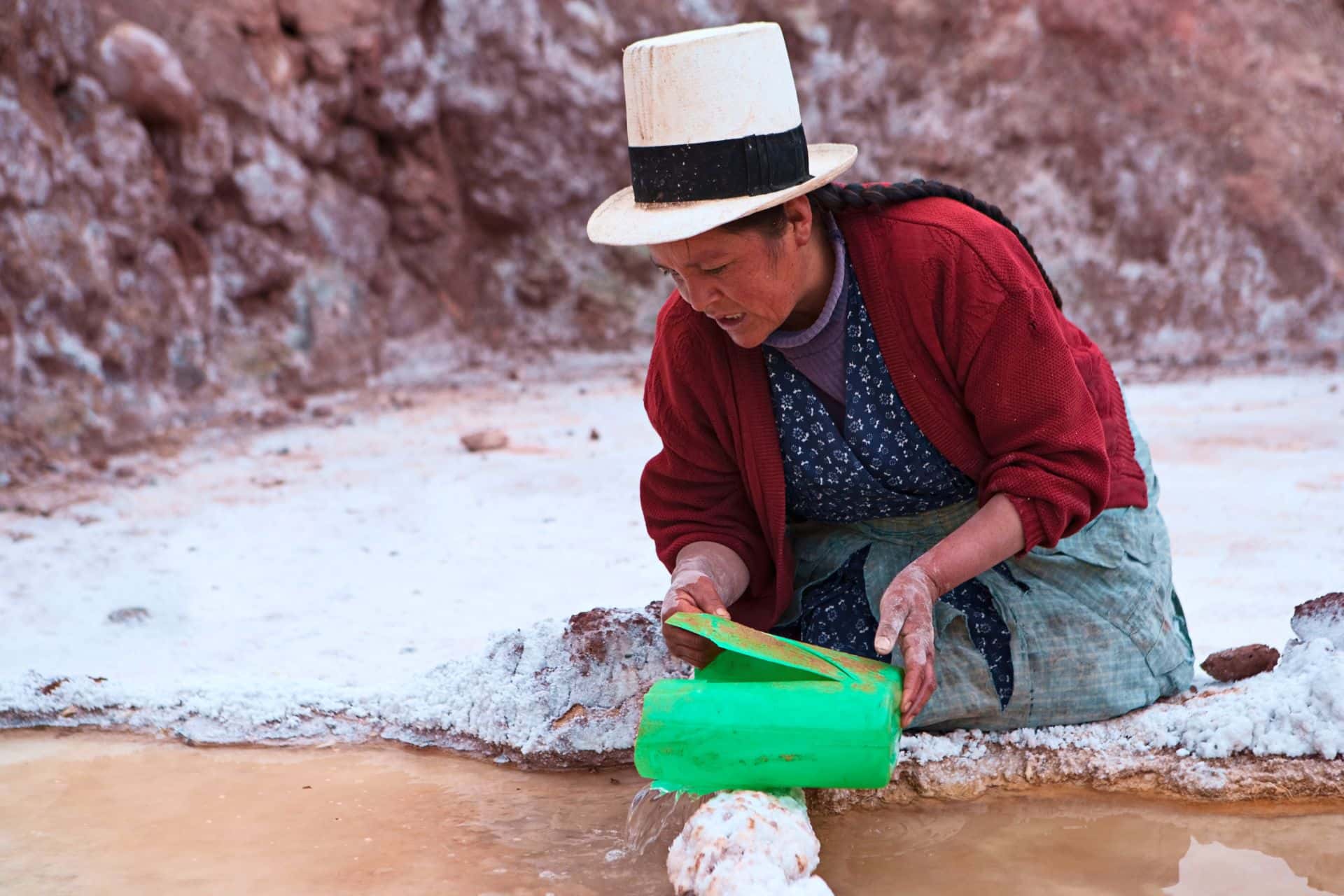
Cultivating Salt at Maras Salt Mines
Embrace the opportunity to actively participate in the salt harvesting process. Under the guidance of the salt workers, you can try your hand at raking the salt or learn how to shape the salt mounds. This hands-on experience will deepen your appreciation for their skills and expertise.

Harvesting Salt at Maras Salt Mines
Discover the Benefits of Pink Salt from Maras
Pink Salt from Maras offers numerous benefits that make it a highly sought-after culinary ingredient and a valuable addition to your wellness routine.
Here are some of the key benefits associated with this unique salt:
- Rich Mineral Content
Peruvian Pink Salt is derived from ancient sea salt deposits in Maras and is naturally rich in essential minerals like calcium, magnesium, potassium, and iron. These minerals contribute to overall health and well-being, supporting proper bodily functions and mineral balance.
- Distinctive Flavor Profile
The flavor of Peruvian Pink Salt is characterized by its mild saltiness and subtle hints of sweetness. This delicate flavor profile enhances the taste of dishes without overpowering other ingredients, making it a versatile choice for seasoning a variety of culinary creations.
- Natural and Unrefined
Peruvian Pink Salt is harvested using traditional methods that involve evaporating natural saltwater from the terraced pools at Maras. It is unrefined and free from additives or chemical processing, ensuring that it retains its natural mineral composition and purity.
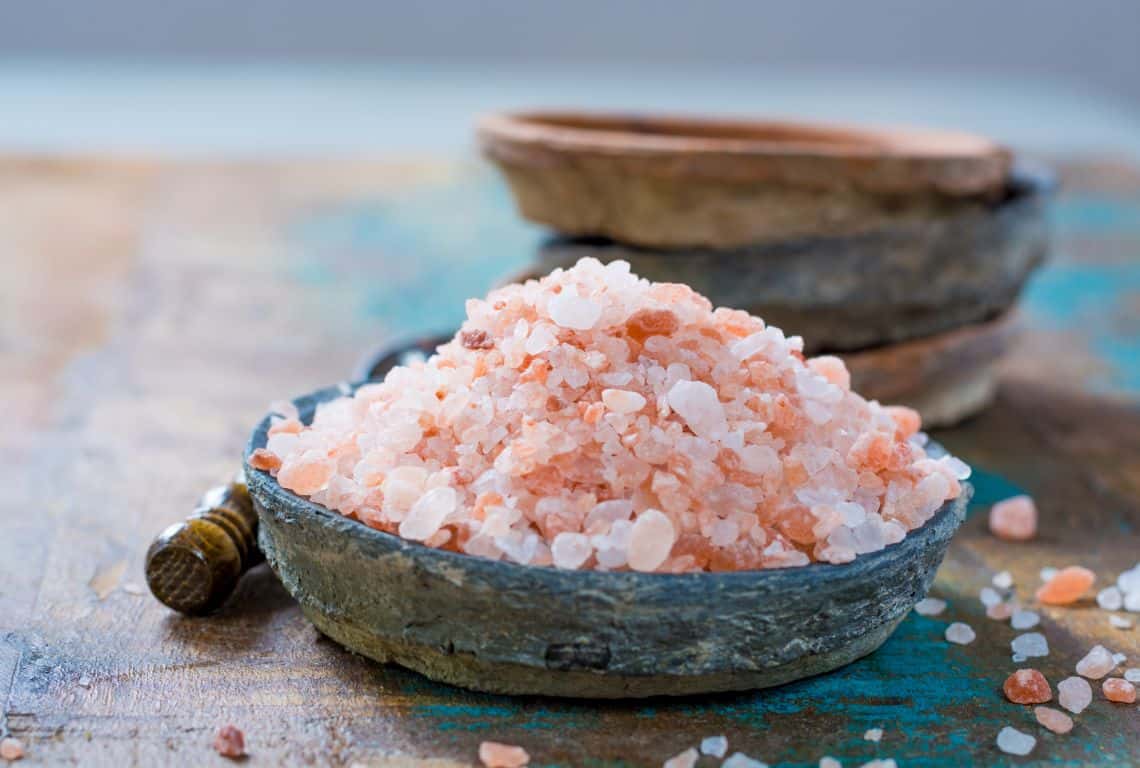
Pink Salt from Maras Salt Mines / Cusco to Maras Salt Mines
- Texture and Crunch
The coarse texture of Peruvian Pink Salt adds a pleasant crunch to dishes, enhancing the overall sensory experience. The textured crystals provide an enjoyable mouthfeel and can be used as a finishing touch on salads, roasted vegetables, or grilled meats.
- Visual Appeal
The distinct pink hue of the salt crystals adds visual appeal to your culinary creations. It can be used as a decorative element, sprinkled on top of dishes, or incorporated into homemade bath salts and scrubs for an aesthetically pleasing touch.
- Versatile Usage
Peruvian Pink Salt can be used in various culinary applications. It can be used in cooking, baking, and seasoning, adding depth of flavor to dishes. Additionally, it can be used as a rimming salt for cocktails or as a mineral-rich ingredient in homemade spa treatments.
- Wellness and Relaxation
In addition to its culinary uses, Peruvian Pink Salt is believed to have therapeutic properties. It is often used in wellness practices like salt baths, exfoliating scrubs, or as a purifying ingredient in air-purifying lamps. These applications can promote relaxation, improve skin health, and help in detoxification.
Intrepid Scout's Tips for Visiting Maras Salt Mines
- A trip to see Maras Salt Mines will take you at least half a day, so plan accordingly.
- Combine your visit to Maras Salt Mines with a stop at Moray and Ollantaytambo for a full-day tour of the Sacred Valley of the Incas
- Make sure to get some salt as souvenirs and buy some to take home as well. It is mineral-rich and good for your health.
- Consider hiring a local guide to enhance your experience. They can provide fascinating insights, historical context, and stories about the site, making your visit even more enriching.
- Think about joining a guided tour to take the stress out of figuring out transportation details. Here are a couple of tours worth checking out:
Pisac Inca Town, Artisan Market, and Ollantaytambo Full-Day Tour from Cusco
This is a full-day tour to the Sacred Valley, Pisac, and Ollantaytambo from Cusco. You will visit the local market in the picturesque town of Pisac, and enjoy a guided tour of Ollantaytambo and the Temple of the Sun Guide. Guide, lunch, and round-trip hotel transfers are included.
The Ultimate Sacred Valley tour: 1 day of Inca history, lifestyle, landscapes
This comprehensive full-day excursion is ideal for travelers with limited time in the region. Alongside a small group and local guide, visit Maras, Moray, Pisac, and Ollantaytambo in an unconventional order to avoid other tour groups and enjoy a more intimate experience.
You Might Also Like:
Cusco to Ollantaytambo: 15 Fascinating Things to Discover at Peru’s Ancient Fortress
BEST TIME to VISIT MACHU PICCHU (Top #1 Month for Ultimate Adventure)
Best SELF-GUIDED MACHU PICCHU TOUR (Explore 11 Marvels of Inca Citadel)
How to See the Mesmerizing SUNRISE at MACHU PICCHU (9 Steps to Witness the Magic)
9 Best PHOTOGRAPHY LOCATIONS at MACHU PICCHU (+Useful Photo Tips)
9 Top THINGS to DO at MACHU PICCHU (Unveiling the Enchanted City of the Incas)
How to Reach Machu Picchu Without Hiking (2 Easy Steps!)
Hiking to MACHU PICCHU from AGUAS CALIENTES in 4 Easy Steps
7 Fun and Cool THINGS to DO in AGUAS CALIENTES (Besides Machu Picchu)
12 Proven Strategies to Prevent Altitude Sickness in Cusco (Master the Heights!)
What to Pack for Peru: 14 Detailed Essentials for an Adventure-Filled Exploration
Did You Find This Useful?
Why Not Save Cusco to Maras Salt Mines to Your Pinterest Board!
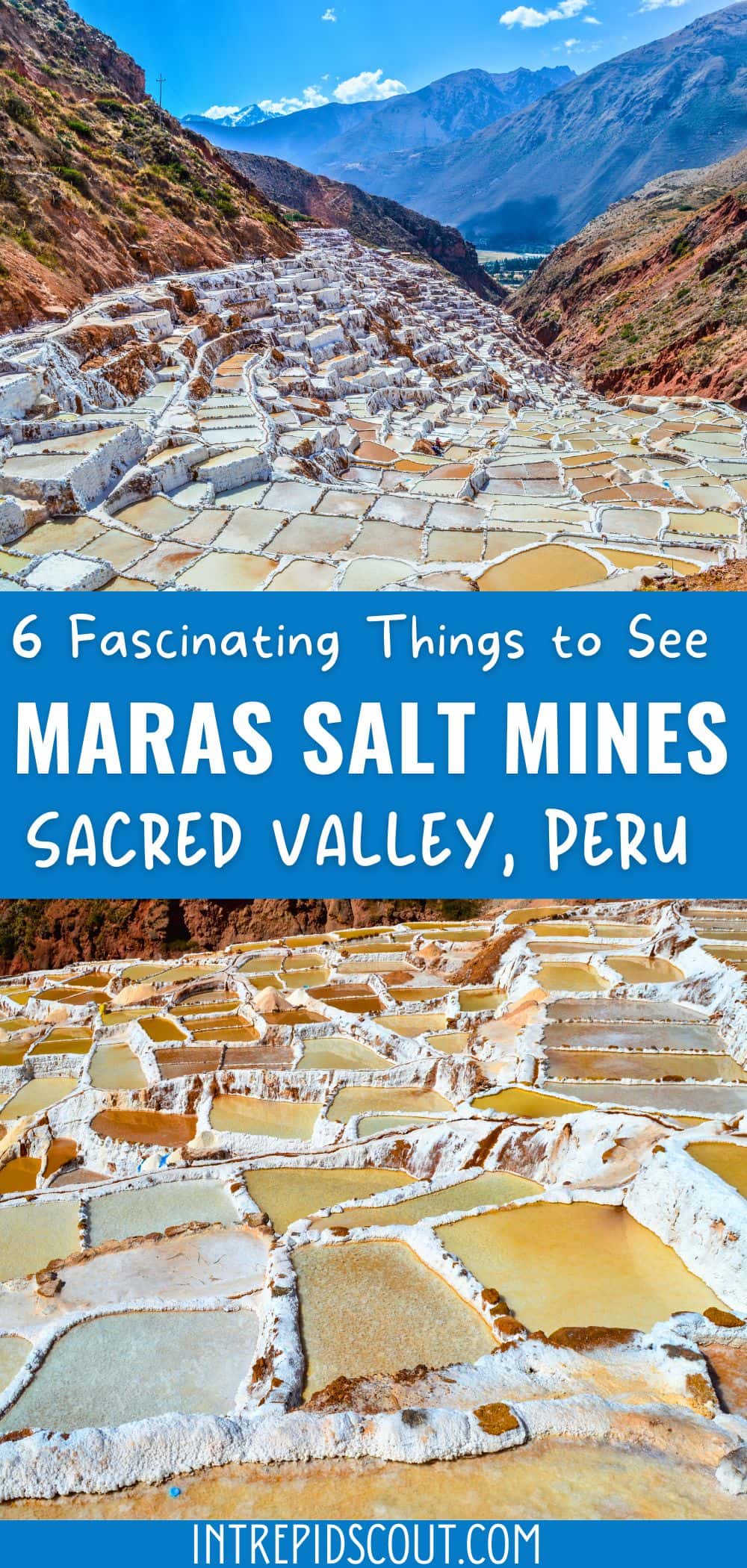
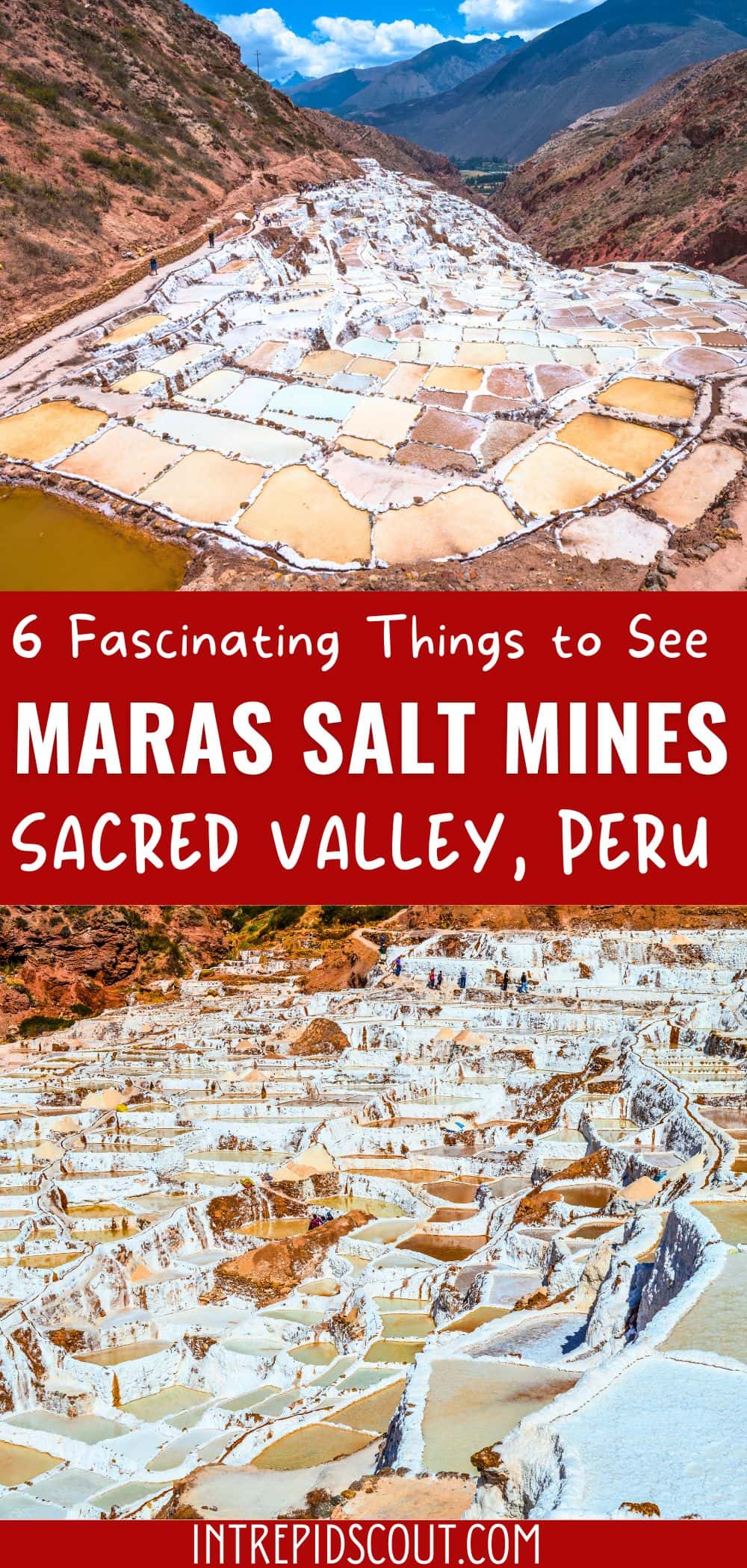
Now, It Is Your Turn, I Would Like to Hear Back from You!
Are you planning a trip to Peru?
Please let me know! Drop me a quick comment right below!
Click on any of the images below to get inspired and to help you with the planning process for your trip to Peru!
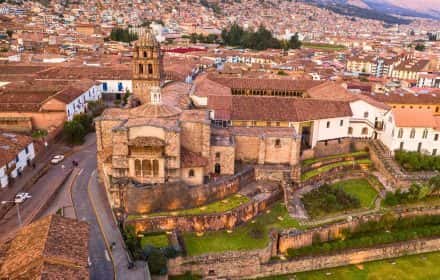
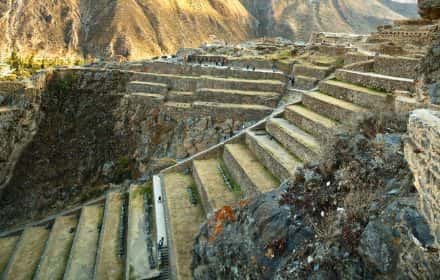
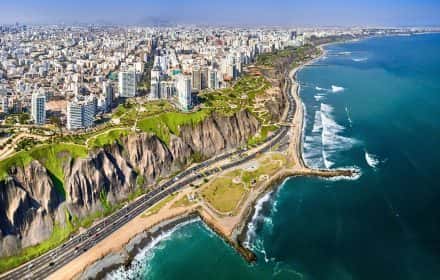
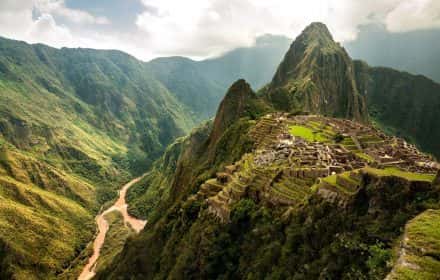
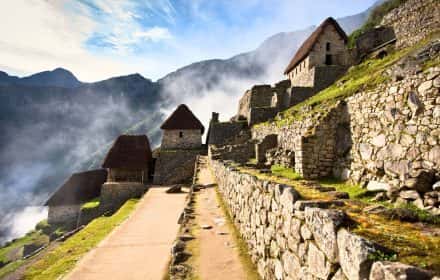
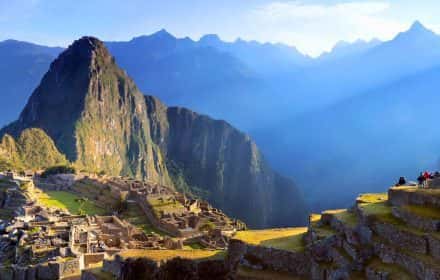
Comments:
2 thoughts on “Cusco to Maras Salt Mines: 6 Things to Discover in Sacred Valley’s Natural Wonder”
Your pictures of the salt mines are gorgeous. And the photos of the locals doing their mining are very interesting. It is sad that tourists ruined this nice site and they are no longer allowing them to walk along the paths.
Thank you for your kind comment! I am not surprised that they restricted the area. They should have done it. It is very fragile and can it easily damaged.